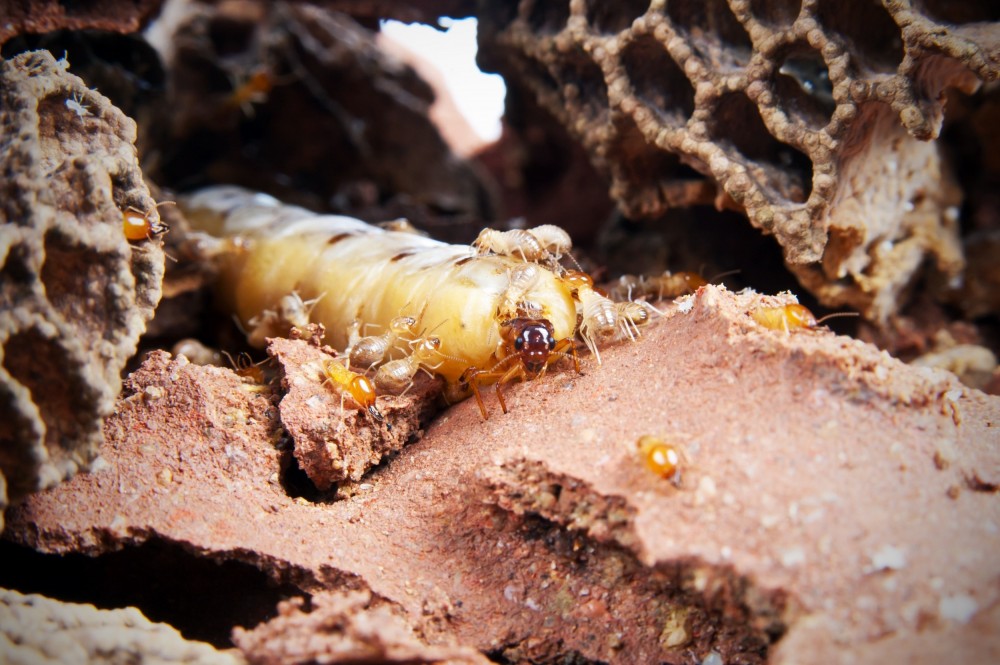
Eusocial queens often show high fertility, such as this termite. Research led by IAST researchers finds that high fertility may have allowed mothers to persuade manipulated offspring to help voluntarily.
Copyright: Rat Puanrak
Some of the most striking animal societies we see today are headed by queens with extraordinary powers. A typical queen of a honeybee colony produces pheromones capable of keeping her colony subjects unreproductive - thus priming them to care for her so that she can produce thousands of eggs per day for years. This is not unusual among elaborate animal societies. Powerful queens occur across social bees, ants, wasps, termites, social shrimp, and even mammals such as naked mole rats whose queens live for decades without cancer despite extraordinary fertility. Naked mole rat queens too induce their colony subjects, who consume her feces containing hormones that prime them to help.
Evolutionary biologists have long been fascinated by these facts and have actively sought to explain how animal societies evolved. A classic hypothesis proposed in the 1970’s by American zoologist Richard D. Alexander was that mothers manipulated offspring to help against their own genetic interests by limiting maternal care, by aggression, or with pheromones. This hypothesis could explain both the existence of animal societies and their powerful queens. However, data gathered over the last decades suggest that workers in animal societies often “want” to help, meaning that they do so in the interest of the genes in their bodies. This indicates that the priming by the queen does not seem to be manipulative but rather informative in that it is in the workers’ best “inclusive fitness” interest to get to work: if they do, they would be helping reproduce a highly fertile mother so they themselves would have many siblings with whom they share genes. These data seem to reject the hypothesis that animal societies evolved from maternal manipulation, leaving unanswered why queens are often so influential.
Two theoretical biologists, Mauricio González-Forero, from the School of Biology of the University of St Andrews (UK), and Jorge Peña, from the Institute for Advanced Study in Toulouse (France), teamed up to investigate this question. Using mathematical models and theoretical concepts from evolutionary biology, evolutionary demography, and economics, they found that the answer may still lay in maternal manipulation, by a modification of Alexander’s idea. Their model shows that if mothers manipulate offspring with hormones or pheromones - as some parasites can do - then they can use the help available to become hyperfertile. “And once mothers are hyperfertile, workers will be willing to help” explains Jorge Peña. “What is required is that workers’ help and mother’s fertility are synergistic enough so that the trade-off between survival and reproduction faced by solitary mothers is alleviated by the presence of helpers at the nest”. This suggests that ancestral manipulation can establish animal societies as we often see them today, where queens are highly influential and highly fertile and where workers help voluntarily to raise their numerous siblings. Mauricio González-Forero concludes: “In other words, an ancestral conflict between mother and offspring is dissolved by the evolutionary process unleashed by the conflict itself. These findings raise the question of whether analogous conflict-dissolution processes may help explain and trigger the origin of agreement more widely, such as in mutualisms and some human interactions”.
Article published in Proceedings of the Royal Society B: https://royalsocietypublishing.org/doi/10.1098/rspb.2021.0386

